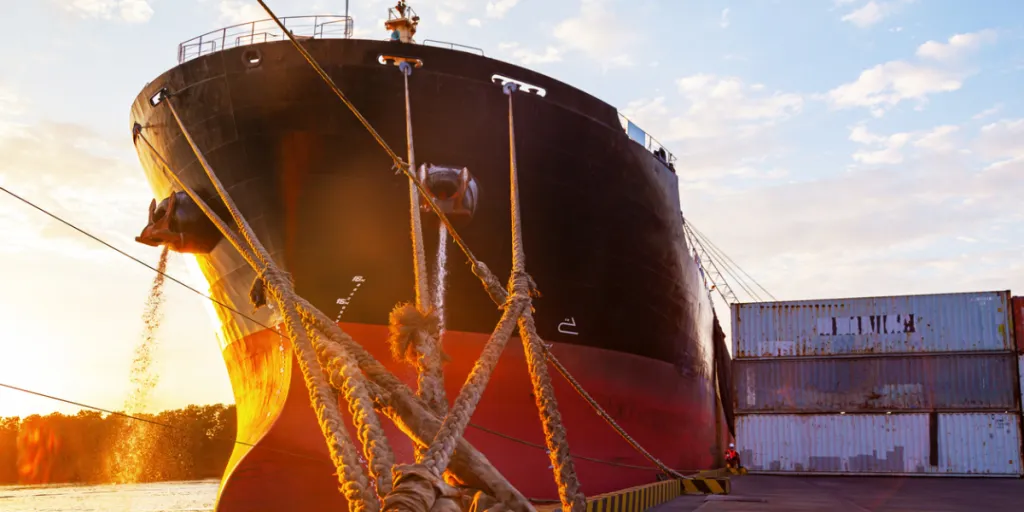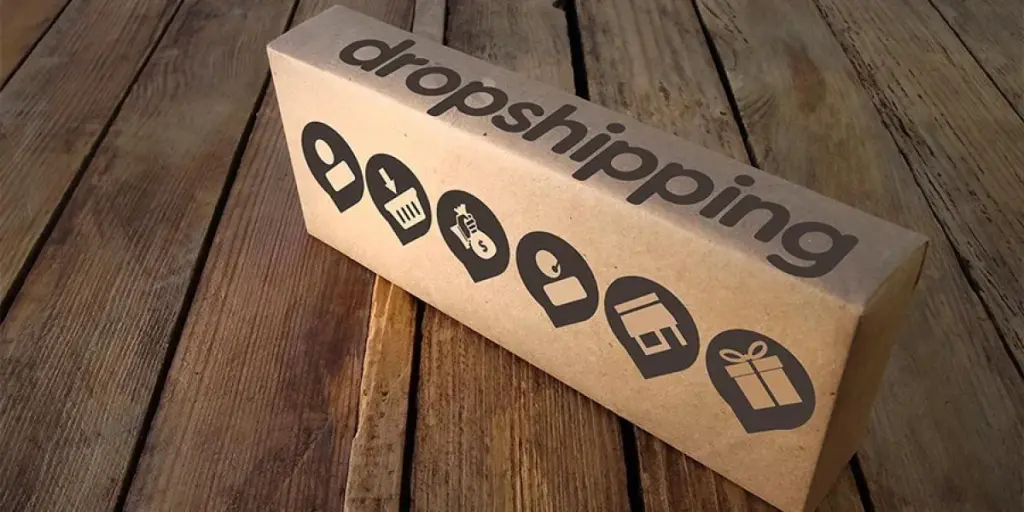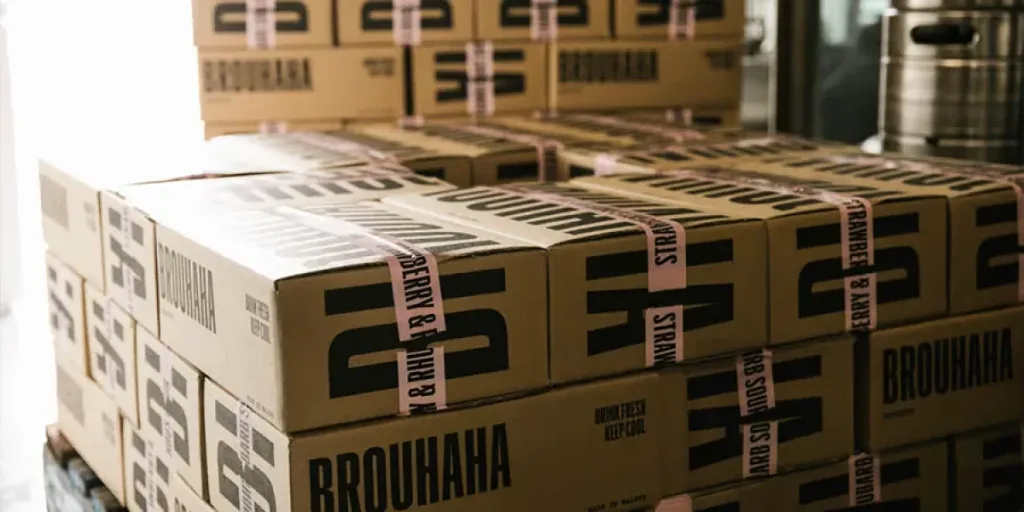Cargo shipments are safe and secure, but unforeseen events can make things go wrong. And in such cases, the professional freight forwarder or carrier may not be liable for any loss or damage.
The liability of forwarders and carriers is only limited. If your products encounter an unfortunate incident, you’ll likely have to deal with a long list of complex terms and conditions.
That’s why it pays to familiarize yourself with the general principles of cargo insurance, the claims process, and how to navigate the hurdles. So read on for an in-depth guide aimed to help retailers make the most of cargo insurance.
Table of Contents
Introduction to cargo insurance
Different types of cargo insurance
How does cargo insurance work?
The claims process in cargo insurance
Common exclusions in cargo insurance policy
Tips to choose the right cargo insurance
Conclusion: Unveiling the dynamics of cargo insurance
Introduction to cargo insurance
Your cargo is open to unpredictable events in the sea, on the road, or during air transit. Such events can damage your products, and the carrier’s liability won’t be sufficient to fully compensate for the loss.
While recent years have seen a significant decline in these cases, the numbers are still high. About 661 containers were lost at sea in 2022. However, you don’t have to lose everything due to unforeseen events. In comes cargo insurance.
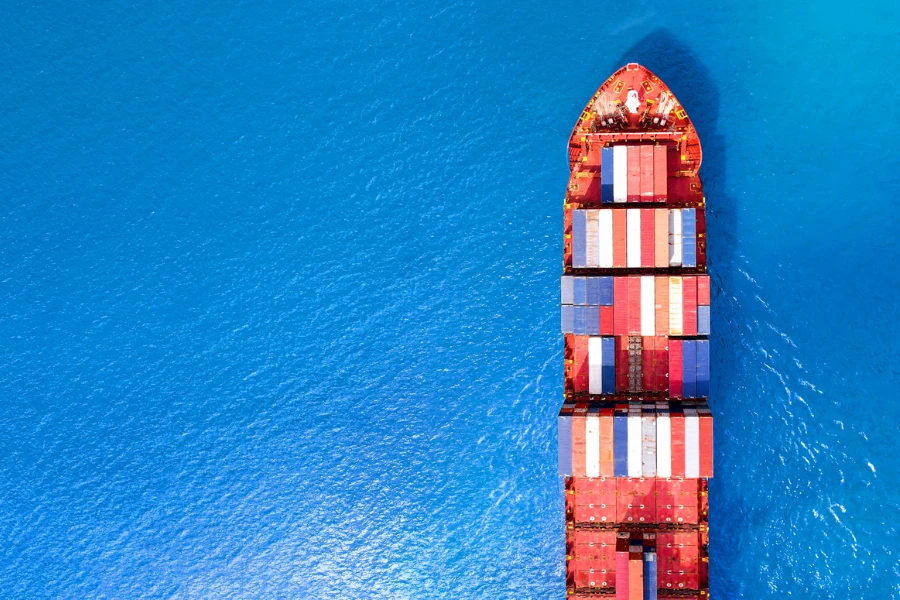
Understanding the basics of cargo insurance
In essence, cargo insurance refers to a risk management solution that protects your business from loss caused by damaged or lost cargo. The coverage extends to the element of an insured amount and differs from carrier liability.
Seeking preventative measures before an unfortunate event is a prerequisite for frequent shippers. Freight or cargo insurance is an advantageous solution to limit financial liability during such moments.
The importance of having cargo insurance
The goal of cargo insurance is to limit the financial loss when your products get damaged. This insurance coverage comes with the following key benefits:
- All risk coverage – The coverage will buffer you against significant damage or loss arising from external factors beyond your control. This includes vermin, theft, or improper handling.
- Warehouse-to-warehouse coverage – Insuring your cargo guarantees protection against damages or losses during transportation from one warehouse to another.
- Profit guarantee – damage to or loss of business products has direct financial consequences, but cargo insurance can secure a profit even after cargo loss.
- Peace of mind – Knowing that your investment is secure offers a sense of peace. You’ll sit back and relax as you anticipate your shipment.
- Cash flow guarantee – The insurance coverage guarantees consistent cash flow in a business even during unfavorable shipment obstruction.
- Security against fragile goods – A fragile sticker and cargo insurance policy are required if you deal with these goods.
Different types of cargo insurance
Generally, cargo owners can choose from the following three types of cargo insurance:
Land cargo insurance

The term refers to insurance coverage for freight moving on the road (inland movement) using trucks or other utility vehicles. Your products will be covered against incidents resulting from theft, damages, and other freight shipping risks. Go for it if you intend to ship goods within the country.
Marine cargo insurance
This coverage protects you against merchandise loss while at sea. It safeguards the interests of shippers, consignees, and business owners involved in maritime trade. This financial protection buffers you against loss caused by perils like sinking, collision, piracy, or other specified risks during the voyage.
Air cargo insurance
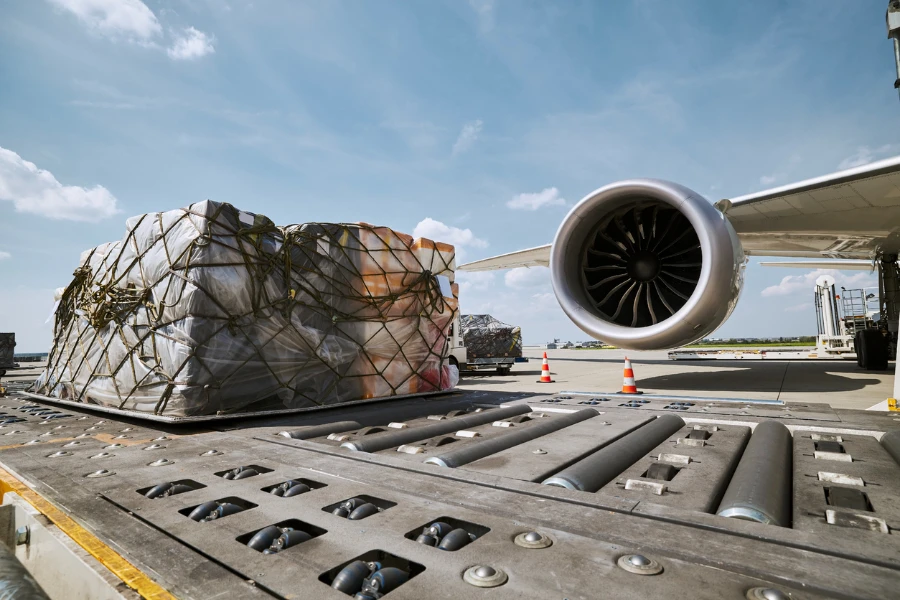
This cargo insurance policy protects goods transported by air. The risks covered by this offering range from damage and loss to theft and cargo destruction.
How does cargo insurance work?
Insurance providers offer unique cargo insurance packages. There’s no agreed-on workflow, but the policies follow a standard process.
Cargo insurance coverage: from origin to destination
The most notable distinction between cargo insurance and carrier coverage is that the former spans your products’ entire journey from origin to final destination. This policy begins at the departure point, commonly called the “warehouse to warehouse” coverage. It extends through various modes of transportation depending on the chosen shipping methods.
Cargo insurance covers the goods while in motion. You’ll receive safeguards against unforeseen events that could cause damage or loss. The coverage is tailored to address the risks associated with the complexities of global trade and extends domestic and international shipments.
Your cargo insurance coverage concludes when your products arrive at the destination. It covers your goods even during unloading and storage at the agreed-upon location.
Determining the insured value of cargo

You can determine the insured value of your cargo by assessing the goods’ worth. This value will include:
- The cost of the goods
- Freight charges
- Any additional expenses
Insurance providers use varying valuation methods. You’ll encounter options like invoice value, market value, or replacement cost based on the terms you negotiated with your insurer. Only through accurate valuation will you ensure the insurance coverage adequately reflects the financial investment and potential losses.
Currency exchange rate fluctuations and additional charges like duties or taxes may influence the insured value determination.
Factors influencing the cost of cargo insurance
These key factors will determine how much you pay for cargo insurance:
Type of coverage
Basic coverage protects against specific perils, while more comprehensive policies address more risks. Comprehensive cargo insurance charges higher premiums because it covers a broader scope of risks.
Shipped items
You’ll pay higher premiums if you deal with high-value or delicate goods. The insurer will determine your risk level based on the characteristics of the cargo. These are:
- Fragility
- Perishability
- Market demand
Loss history
An insurance company will also evaluate the frequency of your previous claims. They’ll consider you a higher-risk client if your track record has frequent claims and set higher premiums than your counterpart with a “favorable” history.
Shipping route
Geopolitical stability, weather conditions, and the prevalence of theft will determine a route’s risk level. You’ll pay higher premiums if your route passes through “hostile” regions. That’s why businesses consider these route-specific factors when negotiating coverage.
Your risk management strategy
Your insurer will evaluate your measures to mitigate cargo transportation risks. The right security protocols, packaging standards, and adherence to industry best practices will lower your risk profile. The insurance provider will likely charge more favorable insurance rates.
The claims process in cargo insurance
You must file a claim to hold a carrier liable. The relevant insurance provider will reimburse the full value if the claim succeeds. This value will depend on the commercial invoice or market value. The insurer will then hold the carrier liable for the relevant costs.
How to file a claim in cargo insurance

Before you start the claims process, you’ll need the following supporting documents:
- Original policy certificate
- Packing lists and invoices
- Original lading bill
- Survey report or other proof of damage or loss
- Stowage broker’s record or landing account
Once these are ready, you’ll proceed to the following claim settlement process:
Notification of loss
The first step involves notifying your insurance provider about the incident that may create a claim. Do this immediately after the unfortunate event. The notification should include relevant information like:
- The incident’s time and date
- Location
- Nature of the loss or damage
Documentation and assessment
After notifying the insurer, you’ll submit the relevant documentation for damage assessment. Your documentation should be accurate and thorough to create a strong case.
Survey and assessment
The insurer will appoint an investigator to survey the incident’s circumstances and the extent of damage or loss. They’ll then create an independent report that aids claim validation.
Claim review
The insurance company’s claims department will compare the evidence you submitted with the surveyor’s report. These professionals will place all these facts against the policy’s terms and conditions. If your claim is valid and within the coverage guidelines, they’ll compute the compensation you deserve.
Settlement offer and negotiation
Your insurer will then present a formal settlement offer and the settlement terms. If you’re unsatisfied with the offer, you can negotiate a mutually acceptable agreement.
Payment and claim conclusion
If you accept the offer, your insurer will process compensation for the agreed-upon amount. The claim settles after they’ve paid you and you’ve completed the necessary paperwork.
Time frame for settlement of claims

Cargo insurance claims differ, and the entire process has no standard duration. Generally, you might have to wait between 30 and 60 days.
The time spent on negotiation settlement will depend on the claim’s complexity and size. However, the funds will take less than a week to reach your account after agreeing on a fair settlement.
Common exclusions in cargo insurance policy
Cargo insurance can buffer you against financial losses from a broad spectrum of transit risks. However, you should know several notable insurance exclusions.
What does not get covered?
Insurance companies will not cover the following common exclusions. They deem most of these easily avoidable through proper planning and heeding best practices.
Inherent vice
This term infers the foreseen damage or loss of goods in transit. Cargo insurance doesn’t cover any damages resulting from the nature of the product.
Latent defect
Insurance providers don’t cover product issues that wouldn’t be noticeable during inspection. They don’t compensate for damages resulting from the quality of goods.
Loss caused by improper packaging
Freight insurance rules require your shipper to secure cargo properly using the right packaging techniques. Your insurer won’t pay if the damage resulted from improper crating or wrapping.
Willful misconduct
This insurance exclusion protects forwarders and carriers from willful misconduct of insured parties. Insurers don’t compensate individuals who perform intentional misconduct or fraudulent activities.
Unexplained shortage or loss
Cargo insurance excludes unexplained losses occurring in your vehicle. You’ll face the financial burden if goods disappear in your car.
Understanding policy terms and exclusions
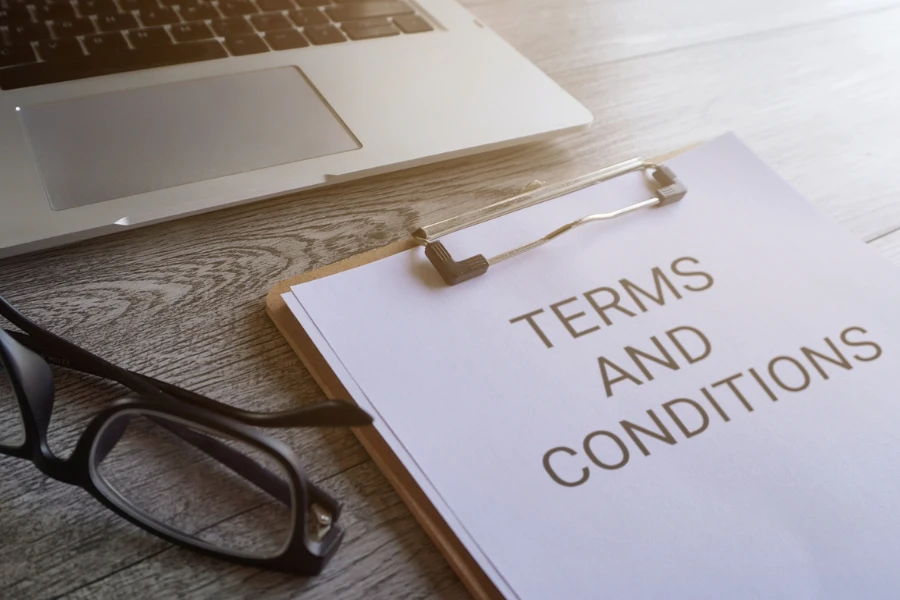
Understandably, you can’t enter a deal on which you’ve got limited information. So, read the fine print comprehensively to gain insights into your cargo insurance coverage’s terms, conditions, and limitations.
The terms and conditions offer accurate information regarding the valid risks and exclusions. You’ll also learn the specific conditions that can impact your claim’s validity. Carefully reviewing this documentation will also provide a comprehensive understanding of your rights and obligations.
All these insights are valuable if you want to create a strong claim. The details directly impact the outcome of your case. That’s why savvy business owners prioritize reading and understanding the terms and conditions.
Tips to choose the right cargo insurance
Cargo insurance is the ultimate protection against damages and losses to your items in transit. But providers vary, and the vast offerings might confuse you. Still, you don’t want to make the wrong choice.
Considerations when looking for a cargo insurance provider
Check the following key indicators when comparing insurance providers:
Provider presence
Your cargo insurance provider should be able to pay out the claims in your destination country. Read through the policy’s terms and conditions and ascertain whether the underwriting company operates in your country.
Premium costs
Compare insurance premiums and offerings from multiple insurers and point out a competitive rate. Avoid excessively low premiums since most have hidden costs and insufficient coverage.
Coverage limits
Higher premiums come with greater coverage limits. Essentially, go for a coverage limit that makes sense to your business’s nature, cargo type, and route risk level.
Deductibles
Verify your deductible responsibility when filing a claim. Always negotiate for lower deductibles as they guarantee lower premiums.
Insurer’s reputation
A little research can go a long way. Find out the insurance company’s reputation and financial stability. Online reviews can offer invaluable highlights.
Customizing the policy to match business needs
Your business grows every day, and your coverage requirements will likely advance over time. Therefore, you must choose an insurer that’s flexible enough to ensure you’re adequately covered.
Your insurer should offer customizable offerings that can match your unique needs. Flexible packages can help you match the cargo insurance coverage to your business growth.
Conclusion: Unveiling the dynamics of cargo insurance
Cargo insurance is your invaluable shield if you’re part of the global trade. The coverage guarantees financial protection against the unpredictable twists and turns of transportation. This safety net allows your business to navigate the seas and skies of international commerce confidently.
Unlocking the full potential of cargo insurance will depend on your choice of insurance provider. But most importantly, you must read and understand the coverage terms and conditions.
